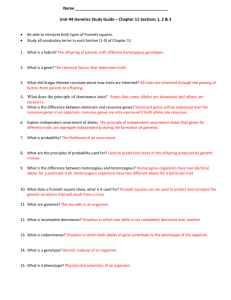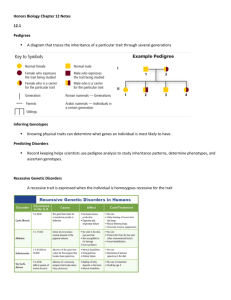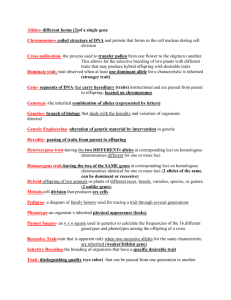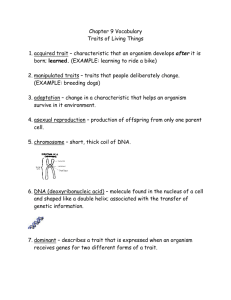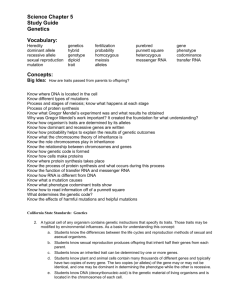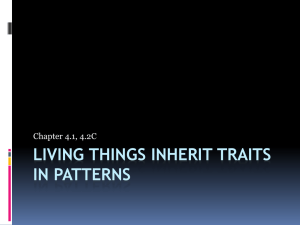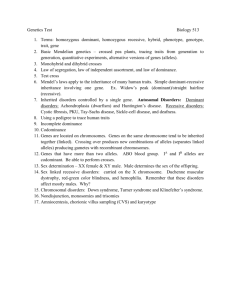Name Unit #4 Genetics Study Guide – Chapter 11 Sections 1, 2 & 3
advertisement
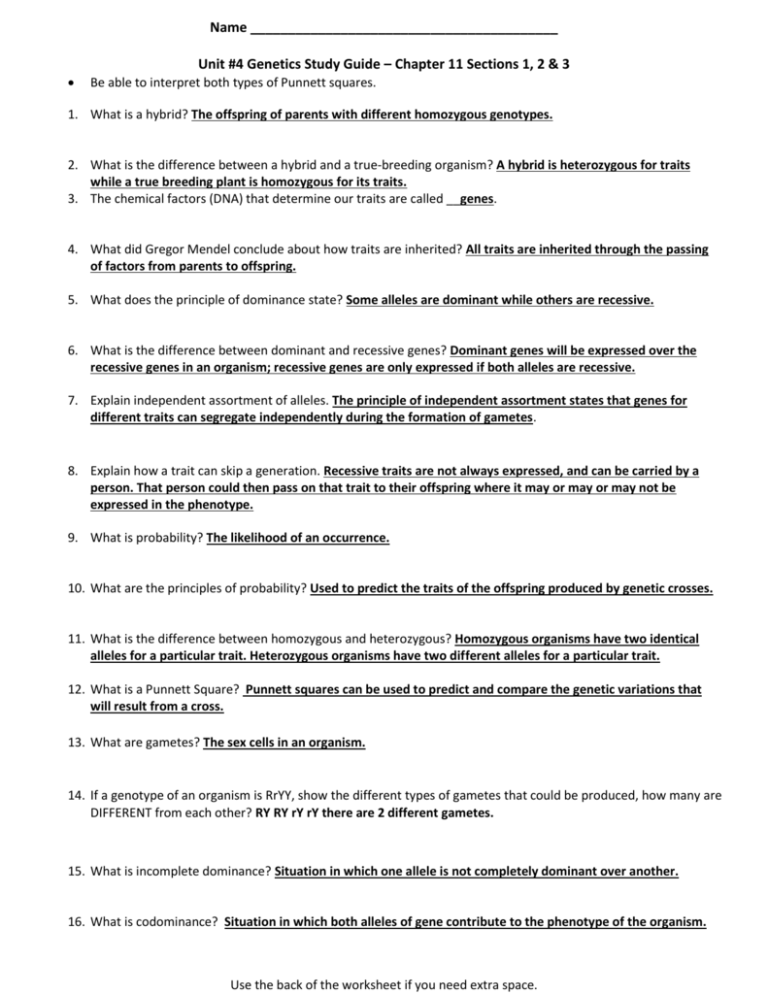
Name _________________________________________ Unit #4 Genetics Study Guide – Chapter 11 Sections 1, 2 & 3 Be able to interpret both types of Punnett squares. 1. What is a hybrid? The offspring of parents with different homozygous genotypes. 2. What is the difference between a hybrid and a true-breeding organism? A hybrid is heterozygous for traits while a true breeding plant is homozygous for its traits. 3. The chemical factors (DNA) that determine our traits are called __genes. 4. What did Gregor Mendel conclude about how traits are inherited? All traits are inherited through the passing of factors from parents to offspring. 5. What does the principle of dominance state? Some alleles are dominant while others are recessive. 6. What is the difference between dominant and recessive genes? Dominant genes will be expressed over the recessive genes in an organism; recessive genes are only expressed if both alleles are recessive. 7. Explain independent assortment of alleles. The principle of independent assortment states that genes for different traits can segregate independently during the formation of gametes. 8. Explain how a trait can skip a generation. Recessive traits are not always expressed, and can be carried by a person. That person could then pass on that trait to their offspring where it may or may or may not be expressed in the phenotype. 9. What is probability? The likelihood of an occurrence. 10. What are the principles of probability? Used to predict the traits of the offspring produced by genetic crosses. 11. What is the difference between homozygous and heterozygous? Homozygous organisms have two identical alleles for a particular trait. Heterozygous organisms have two different alleles for a particular trait. 12. What is a Punnett Square? Punnett squares can be used to predict and compare the genetic variations that will result from a cross. 13. What are gametes? The sex cells in an organism. 14. If a genotype of an organism is RrYY, show the different types of gametes that could be produced, how many are DIFFERENT from each other? RY RY rY rY there are 2 different gametes. 15. What is incomplete dominance? Situation in which one allele is not completely dominant over another. 16. What is codominance? Situation in which both alleles of gene contribute to the phenotype of the organism. Use the back of the worksheet if you need extra space.
